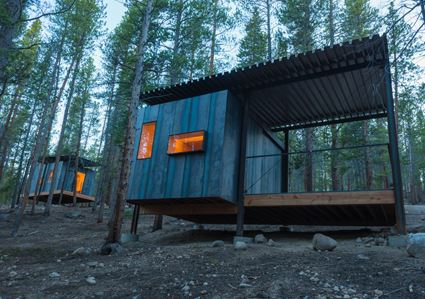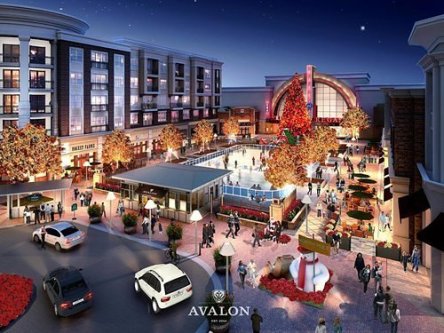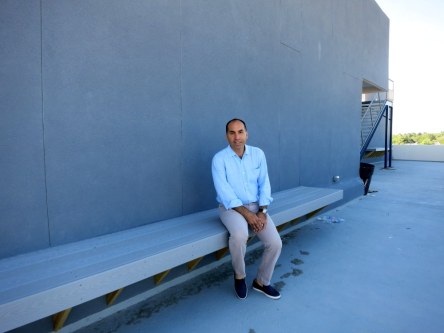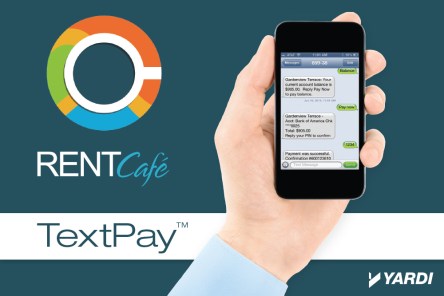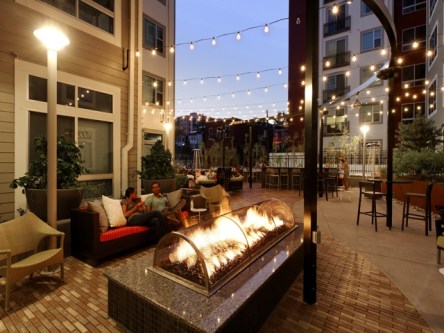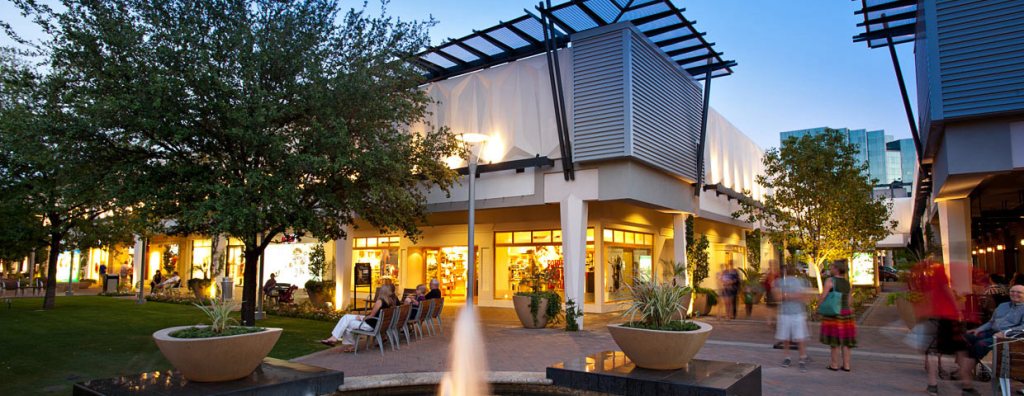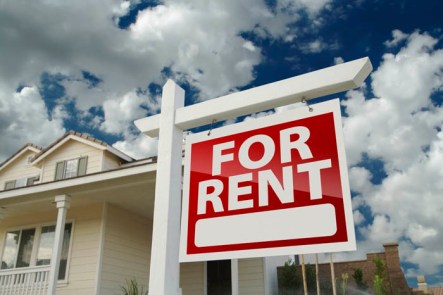In the 2020 National Multifamily Housing Council & Kingsley Apartment Resident Preferences survey, 373,000 residents living in 5,336 communities across the U.S. shared their feedback on what renters want. Millennial renters, particularly college-aged adults, expressed their most desirable features in rental housing. Hot topics for the year included parking, sustainability, health, and security. Amenities in these categories interested more than 50% of respondents. Young renters’ top 10 interests Adult renters ages 25 and under were asked which apartment features and community amenities interested them the most. The following 10 features topped their lists: 91% reliable cell reception 88% swimming pool 87% fitness center 85% controlled amenity access 84% secure, self-service, 24/7 package access 82% more storage space in apartment 83% recycling 79% visitor parking 75% common area grills 75% hot tub “The top three categories here– connectivity, swimming pool and fitness center– speak directly to what is top-of-mind for the typical student renter,” says Esther Bonardi, vice president, marketing at Yardi. “Available Wi-Fi to keep up with assignments and stay on top of their studies, a swimming pool that serves as a social oasis to unwind and relax with their friends, and a fitness center to maintain wellness in the midst of their chaotic schedules.” Bonardi adds, “One difference for students is that connectivity is a major factor in Wi-Fi reliability and speeds rather than cell phone reception. Reliable cell phone reception is a standard or necessity rather than an interest.” Reoccurring themes for college-aged renters It’s no surprise that connectivity is a prominent interest of Millennial renters. More than 91% of respondents listed reliable cell reception as a major interest. Nearly 70% were also interested in having Wi-Fi connectivity in common areas. Parking concerns appeared multiple times on the list of young renters’...
Pet-Friendly Work
Office Options for Furry Friends
Much ink has been spilled on the topic of Millennials and their influence on the modern workplace. This tech-savvy generation is willing to change tracks towards a more satisfying career path, and able to ride the rough waves of the gig economy. Millennials’ demand for a lively urban life is driving the revival of downtowns across the nation, and the development and expansion of a new office design plan: the coworking office. To go with this new office concept, employers are further trying to entice workers with a series of office perks that address the preferences and values of this generation. Office listings platform COMMERCIALCafé looked at one of the most recent additions to the growing range of work benefits―the option of bringing your pet to work―and compiled a list of the 50+ most pet-friendly coworking hubs in the U.S. Peruse the list below and read on for more details about the pros and cons of bringing pets to the office. The list is by no means comprehensive and remains open to suggestions. Among the venues that caught our attention is the whimsically named CO+HOOTS in Phoenix―recently acclaimed one of the most innovative coworking spaces in the U.S.―which invites visitors to meet the office dogs. Strongbox West in Atlanta―the city’s oldest coworking space―is not only a self-declared dog-friendly office, but a veritable ‘doggy daycare operation.’ The Box Jelly in Honolulu holds different events for owners and their pets, and they don’t shy away from welcoming unconventional companions. If you’re considering adopting a pet-friendly policy in your office, it’s good to weigh both pros and cons. There are several benefits of spending your workday with your beloved furry friend. For one, you can stop worrying about its safety and hurrying out the door as soon...
Airbnb Update
Encouraging Experiences
Nestled in the tech hub of the city of San Francisco, AirBnb has achieved widespread global success since its founding just 8 years ago. Beginning with a simple living room turned “bed and breakfast” in a last-minute attempt to pay rent, Brian Chesky and Joe Gebbia are now operating a global company worth over 30 billion dollars. As a pioneer in the use of home-sharing, AirBnb took advantage of the recession in 2008, when many people were looking for cheaper alternatives to expensive hotels when traveling. Notably, AirBnb has gained recognition amongst millennials with its unique, quirky, and anti-corporate image. With the recently popularized “Experiences” feature, people are able to pursue this very sense of adventure that AirBnb’s image offers. According to research released by AirBnb itself, most millennials prioritize traveling over settling down and buying a home. millennials say that they are allocating more money into travel than they did a year ago. Experiences allows users to participate in activities or excursions that are led by local hosts, who give them a personalized view into their city and communities. Experiences can range from just a couple of hours to an itinerary stretched over multiple days, the latter of which are called immersions. These experiences could include physical activities such as hikes or surfing lessons, dining, or even workshops. For now, the Experience feature is only available in select cities. In the United States, the only cities with experiences available are Detroit, Los Angeles, Miami, New York City, Portland, San Francisco, and Seattle. Globally, users are able to choose experiences in Africa, Asia, Europe, and Australia. 8 out of 10 people surveyed in the UK, US, and China, say that the best way to learn about a country’s culture is to experience the country...
Tech at Work
Realcomm Webinar Recap
By 2025, 75 percent of the workforce will be comprised of workers from the Millennial generation. A Thursday webinar hosted by Realcomm: “Technology in the Workplace – Managing the Needs of Multiple Generations” focused on managing that transition successfully and effectively for team members of every generation. Realcomm CEO Jim Young was the moderator. Panelists included: Esther Bonardi, VP of Marketing, Yardi Porschia Parker, Founder, Millennial Performance Institute Shalaya Shipman, Sr. Manager, Operations, SalesForce Kevin Able, President, REALTY|Share Elizabeth Dukes, CMO and Co-Founder, iOffice John Spindler, VP Marketing and Product Management, Zinwave The panelists covered a variety of topics relevant to the escalating generational workforce shift, among them work ideology, preferred methods of recognition, communication platforms and technological expectations. Esther Bonardi, vice president, marketing for Yardi, focused her comments on differentiating the workplace personalities of the Millennials and the Baby Boomers and facilitating constructive communication between the two groups. “I would say to the older generation – reach out and let the younger generation teach you something. Let them know you are willing to learn from them and see what they have to bring to the table. This process starts with the older generation opening up and saying: you mentor me and I’ll mentor you. Let’s teach each other,” Bonardi said. The best way to start such a conversation? Find a neutral subject of interest to both groups, like giving back to the community as a company. “If you’re looking for a place to have these groups where people can exchange information, you might consider corporate social responsibility,” Bonardi suggested. Coming together for the greater good is always a unifying experience that can create professional bonds. Yardi’s workforce in North America is made up of nearly 50 percent Millennial employees, she shared. That has...
Help Wanted
Addressing An Aging Workforce
Born between 1981 and 1998, Millennials currently make up a third of the US workforce, but those numbers will need to rise exponentially in order to meet demand. According to the United Nations, the world’s advanced economies are experiencing a rapid decline in working-age population. The UN projects the available workforce to decrease by 5% within the next three years. That decrease is due primarily to aging of the current labor force, which creates an additional burden for country’s with wage-based entitlement programs like social security. As the number of recipients for these programs increase, the workforce contributions struggle to bridge the gap. In 1945, the ratio of workers to retirees was 41.9 to one. By 2010, that number had dropped to 2.9, with the number expected to drop to 2-to-1 by 2030. Ebbs and Flows As the Baby Boomer juggernaut moved from childhood to young adulthood, lower birthrates followed in their shadow. For years, there’s been growing concern over what would happen once the boomer generation hit retirement. The smaller Gen X demographic averaged a mere 3.4 million births per year – or 65 million total – not enough to supplement the 76 million boomers born between 1946 and 1964. Now it appears the tides are shifting. Sometime in April of last year, the U.S. population reached a significant milestone. For the first time in over fifty years, Baby Boomers no longer claimed the biggest portion of the country’s population. Hitting a high of 75.4 million, Millennials edged out the estimated 74.9 boomers to seize the crown. The Millennial population is expected to peak at 81.1 million by 2036 while the Boomers will shrink to 16.6 million by 2050. Shrinking Workforce With 83 million potential workers, the Millennials appear to be just what...
Snap Happy
Property Marketing Goes Guerrilla
OMG’s, LOLZ’s, puppy-dog faces and flower crowns. Snapchat is sometimes reduced to these simple stereotypes and thought of as something to entertain the kids when the adults get tired of the noise at family dinners. But noise and chaos are staples of modern life, for company and consumer alike. And as the godfather of guerilla tactics, Sun Tzu, expounded upon millennia ago, “In the midst of chaos, there is also opportunity.” When fully leveraged, Snapchat can be used to cut through the chaotic noise, both at family gatherings and in today’s rental marketplaces, to turn potential opportunity into new prospects. Background All social media platforms once represented an unconventional and unrealized marketing space. This is no longer the case. Snapchat is one of the many recent social frontiers that qualifies as a guerilla marketing opportunity for brands. It’s a place where you can outmaneuver your competition through unconventional and creative means (without a huge budget), thereby gaining greater exposure and winning. Some continue to dismiss Snapchat as “just an app.” At one point, the doubters may have been correct, but as the scope of Snapchat’s business has expanded so has their reach. It’s now a social media platform that competes closely with the companies typically identified as giants in the space. Case Study So you want proof, eh? The intrepid property managers at Continental Realty Corporation (CRC) just so happen to be early Snapchat adopters, and they were kind enough to share the data of some recent campaigns with us. In October 2016, CRC ran two Snapchat filter campaigns for onsite events, one in the commercial space and one in the residential space. At the commercial property, CRC ran a custom filter for the “Jerry Adams Chili Cookoff.” The Snapchat filter campaign lasted for...
Next-Gen Employees
Millennial Employment
The senior living industry needs 1.2 million new employees by 2025 in order to meet demand, and that means finding new ways to connect with job-hunting millennials. That “silver tsunami” set to transform the senior living industry will not only change the way providers reach out to residents and provide care, it will also impact staffing and employment outreach. A recent study conducted by Argentum indicates that the senior living industry will have to increase staff by 1.2 million within the next ten years. While some of these new hires will be professionals already working in the industry, a significant portion of potential prospects will be millennials. So how can a senior living provider successfully connect with these young, tech-savvy job seekers? The answer lies in leveraging the latest technology to cultivate a ubiquitous web presence based on partnerships, networking, and a clear articulation of the non-income benefits of committing to a career in senior living. The College Connection According to a recent Senior Housing News report, most college grads conduct their career search through a university program. As a result, the report urges senior living providers to nurture affiliations with local colleges to heighten awareness of career potential within the senior living industry. “We’re facing some real leadership challenges,” Kevin Heffner, director of external relations at the University of Maryland in Baltimore County (UMBC)/ Erickson School, told Senior Housing News. “Some of the titans of the industry are retiring. We’re doing the best we can to develop leaders to fill that void. Providing the opportunity for continued education, in the form of a master’s program or internal certification program, would also make a potential employer stand out from the pack. Not only will these incentives lure ambitious recruits, it also provides potential employees with...
Bellwether Brews
Community Engagement
Taking over abandoned storefronts and long-shuttered factories, breweries are breathing new life into cities across the country. Job interview, proposals and book clubs represent just a smidgen of activities occurring at your local brewpub. In the last few years, cities across the US have experienced a brewery renaissance. From empty storage units to abandoned storefronts, microbreweries are choosing to open taprooms and brewpubs in economically depressed neighborhoods, bringing in new jobs and creating a sense of community. “People tell me, ‘It feels like I’m at my best friend’s place,’ ” Jim Jamison, founder of Foggy Noggin Brewing, tells Imbibe magazine. “ There’s even been a proposal, and another guy asked for permission to marry someone’s daughter. It’s a place where people want to meet.” Pint-Sized Urban Renewal In a recent article for The Atlantic, writer James Fallows identified “Eleven Signs a City Will Succeed.” Wrapping up a list ranging from community engagement to politics and education, craft breweries came in at number eleven. Calling it “perhaps the most reliable” marker of a city on the rise, Fallon believes having a brewery within city limits provides clear evidence of urban renewal. “A town that has craft breweries also has a certain kind of entrepreneur, and a critical mass of mainly young (except for me) customers,” he writes. “You think I’m joking, but just try to find an exception.” Close Communities That entrepreneurial spirit does more than invigorate local commerce; many local breweries make a point of giving back to the community. In Philadelphia, for example, Crime and Punishment brewery sponsors Little League team, while over in Dallas, monthly pet adoption events take place at Community Brewing. Detroit’s Batch donates a portion of its taproom sales to charity and Colorado’s Green Flash’s brews a special pink IPA...
Next-Gen Perks
Employee Benefits
To woo the next generation of workers, employers need to think beyond the standard benefits package and embrace a new era of employee perks. Once upon a time, job seekers placed salary above all else when on the hunt for employment. These days, a new generation of millennial employees is putting less and less emphasis on wages. Instead, they are seeking out opportunities with the potential for career growth and the ability to positively contribute to the world around them. They are also increasingly focusing on a range of nontraditional benefits designed to make the workday more enjoyable and enhance the work-life balance. “Landing a dream job isn’t always just about the actual work,” writes Fast Company’s Lydia Dishman. “Among the best companies to work for, employee review platform Glassdoor found that personnel were just as jazzed about mission-driven company cultures, great career advancement opportunities, and amazing benefits and perks.” While the pendulum hasn’t quite swung far enough to allow applicants to call all the shots, certain industries are struggling to find the right fit for increasingly niche, technology driven positions. In this environment, salary and basic benefits – like medical coverage and 401k options – are relatively standard offerings. In order to stand out in today’s employment marketplace, businesses must offer something different, including new and unique rewards that go beyond extended time off and free-pizza Fridays. Why Perks Matter According to Glassdoor, more than half of all job seekers admit perks are tremendously important. Now that potential recruits can quickly research potential employers online through sites like Glassdoor, companies are pitching themselves as more responsive and flexible. As a result, more and more businesses are offering adaptable work schedules and unlimited family leave. The modern office space now comes outfitted with hammocks, sandboxes and...
Cabin-Style Dorms
Student Housing
With an eye towards sustainability and passive building principals, University of Colorado Denver’s prefab, cabin-style dorms connect modern architecture with outdoor living. Just outside Denver, Colorado sits a cluster of 14 micro dormitories outfitted with all the essentials necessary for comfortable, environmentally-friendly cabin living. Created in partnership with Outward Bound, the micro dorm project was developed by 28 University of Colorado Denver, graduate students participating in CU-Denver’s Colorado Building Workshop. Hands-On and Creative Established in 1991, the Colorado Building Workshop began as part of an effort to pair non-profits with innovative architectural projects. With an emphasis on promoting hands-on skills and creative design, workshop participants use cutting-edge materials and inventive design to produce buildings for disadvantaged communities. Graduate students from CU-Denver’s Studio IV must apply to be part of the workshop. If accepted, they are required to complete 18 credit hours of the Design Build Certificate. The course of study emphasizes both the basics of Design Build and Integrated Project Delivery. The program’s courses cover topics focused on quality and risk management, along with group assignments requiring students to work together to shepherd a project from initial concept to completion. “Collaboration is the core principle of the design-build program,” declares the program’s website. “We are thankful to all the businesses and individuals who support this work and recognize its importance in the local community.” Two Structures, One Footprint Rick Sommerfeld, founder and director of Colorado Building Workshop, set out with his students to create living spaces capable of coexisting with the land. As a result, their final design make the most of open-air entry-points while also providing basic living quarters. With front-facing decks and floorplans that “sit lightly on the landscape,” each individual unit balances private and community spaces. Surrounded by pine forest and...
Millennial Renters
6 Ways to Attract Them
“The Millennials are coming, the Millennials are coming!” We’ve all heard some version of this over the last few years, but now they’re here and ready to rent. Are your properties positioned to get their attention? Here are six simple ways to attract more Millennials to your vacant properties. Learn how you can help them find, like, and trust you, so they will take the next step to becoming residents. Be found on mobile. According to Google, more searches now take place on mobile devices than on computers, and 87% of Millennials always have their smartphones handy – day or night. That means if you want today’s young renters to move in, they need to be able to find you when they’re searching on their phones. Is your property website optimized for viewing on mobile devices? If not, you’re missing out on valuable prospects and possibly not even ranking in search engines at all. Display accurate information instantly. Don’t waste anyone’s time by making your unit availability or prices hard to find. Millennials may be online often, but they’re in a huge hurry! Google tells us that while mobile sessions are increasing, time spent per site visit has decreased 18% in the last year alone. If searchers can’t quickly find the answers they need about your property, they’ll move on, rather than spend more time digging for information. Save yourself extra hassle (and data entry hours) by using online property management software that automatically and accurately updates your internet listings for you on multiple ILS sites. Use great photos. Don’t use outdated or blurry photos on your website, and definitely avoid stock photography whenever possible. Millennials are photo-savvy, thanks to their smartphones and photo-sharing sites like Instagram and Snapchat. They expect to see authentic...
Bridging Generations
Senior and Millennial Housing
A camera pans across the room, revealing the usual suspects – senior residents grouped around small tables, some in wheelchairs, creating a typical scene playing out in senior living facilities across the world. And then, the unexpected…a young man enters, sitting down to share cakes and conversation. At that moment, it becomes clear – this is not your typical “old folks home.” Finland, like many industrialized nations throughout the world, is facing a severe housing problem. According to estimates, in Helsinki 90,000 renters are competing for approximately 60,000 units. This gap in availability has resulted in a brutal housing market, severely affecting young adults trying to move out and live independently. Ranked as the 16th most expensive city in the world, Helsinki is facing rapid population growth and ever-rising housing costs – leaving the city’s youth vulnerable to homelessness. “It’s a very expensive city to live in,” 23-year-old kindergarten teacher Emil Bostrom recently explained to CNN. “If you manage to get an apartment that the city owns, it can be quite affordable. But the amount of applicants for those apartments is so high that the waiting list takes forever.” “Youth homelessness is the sum of many parts, and there is no simple solution,” Finnish Youth Housing Association Secretary General Minna Vierikko declares. “It is essential that different actors join their forces and start seeking alternative models to solve the problem of youth homelessness. For Miki Mielonen, Homes That Fit provides a simple solution. Homes That Fit invites Finnish millennials to cohabitate with Helsinki senior citizens as part of a pilot program run by City of Helsinki’s Youth Department, Design Driven City, the non-profit rental housing company Alkuasunnot, and the national youth housing association Nuorisoasuntoliitto. In exchange for socializing with elderly residents, 25 eligible participants...
Homeownership
Do salaries stack up?
Finder.com recently gathered data on 78 cities throughout the US. The figures were used to determine the salaries needed to buy a home and live comfortably within these cities. The average wage in the US–$52,250 according to the US Census Bureau—sustains homeownership in only 46 percent of the listed cities. Realistically, the numbers are even more conservative than the data would suggest. Of the cities examined, the top ten cities on the list that required the highest salaries would not surprise anyone. California cities occupy nearly half of the top ten. San Francisco led the pack, suggesting a salary of at least $180,600 for the average home priced at a cool $1,119,500. San Jose and Los Angeles came in second and third, respectively. A resident earning $129, 864 could afford the average home in San Jose while $90,244 is needed in Los Angeles. My beloved Atlanta comes in at 45 on the list. The average home, priced at $180,000, requires a salary of about $51,551. Jackson, MS, wraps up the list. Residents earning $43,265 can ideally afford to buy a home and live comfortably. In defining what it means to live comfortably and buy a home, the site made several assumptions that simply don’t resonate with many Americans. We will take the Atlanta market, for example. For buyers seeking a home in the $180,000s, the assumption that the homebuyer has the ability to pay off annual non-mortgage related household debt and has saved up $36,000 as a down payment is unrealistic. Manuel Cabrera, Branch Manager with CalAtlantic mortgage, shakes his head upon hearing the assumptions. “Primarily, the median home price within the Atlanta metropolitan may be $180,000 but that doesn’t mean it’s a realistic price for buying a home. There are still foreclosures and...
Renting to Millennials...
What You Know is Wrong
You know all of those reports on Millennials and their love for tiny, urban spaces in walkable communities? They might be wrong. It turns out that Millennials value space and authenticity more than we previously believed—and the two rarely go hand-in-hand. A recent study suggests that while Millennials do enjoy their apartments in urban environments, they’re willing to leave rentals behind for more spacious accommodations. The BUILDER Responsive Home project reveals that young adults enjoy the amenities that urban living provides, but they crave more space. Of the participants surveyed, 83 percent said more space is the biggest motivator to purchase a home. Unfortunately, 61 percent admit that they cannot afford a home. The report suggests something that many have suspected for a while: Millennials want it all while paying next to nothing. They want airy homes in walkable neighborhoods. Easy access to recreation, shops, and restaurants should not interfere with nearby sprawling green spaces, trails and outdoor activities. When competing for the 61 percent of renters who cannot afford a home, one of the biggest challenges for multifamily firms is to figure out how to offer the most spacious living, in walkable areas, that Millennials can afford. Business Insider reports that the average median income for male Millennials is $35,000 per year and $31,069 for females. This generation doesn’t have tons of cash tucked away, either. A survey conducted by the Federal Reserve Survey of Consumer Finances indicates that the average Millennial has a net worth of $10,400. Since most Millennials do spend less than 30 percent of their annual income on housing, they don’t have much to spend on housing relative to the tall orders that they’re placing. Simply telling the Millennials, “tough luck,” won’t cut it. Some multifamily builders have chosen...
5 Resolutions
Social Media Edition
Forbes offers insights on the behavior of Millennial consumers. One thing that stands out is Millennials’ desire for genuine human interaction on social media. They don’t want your best advertising techniques. They don’t care how much you spend on marketing. They want to know you and why you feel that your product is worthy of their attention. Make these five New Year’s resolutions to tap into what Millennials truly want in their social media marketing. Never leave a check-in unacknowledged. When someone takes the time to check in at your location or event, it’s a big deal! Something that you’re doing has already impressed them. They even want their friends to know where they are and how happy they are to be there. Solidify the relationship by taking a moment to respond. Like the post. Thank them personally for their attendance. Your response will make app users feel appreciated and acknowledged, which goes a long way in social media marketing. 62 percent of Millennials say that if a brand engages with them on social networks, they are more likely to become a loyal customer. Use your voice. You don’t need to be particularly funny or clever. The fact that you are a regular human being means that Millennials already like you more than a carefully crafted message by a team of distant professionals. Only 1 percent of Millennials surveyed say that a compelling advertisement would make them trust a brand more. Millennial consumers know when they’re being advertised at. Skip it. Just be yourself. Keep track of your engagements to form a better marketing plan. Analytics are helpful tools to let you know what you’re doing well. Pay special attention to your engagements (clicks, likes, comments). This data provides details about the events, promotions, and topics that resonate with your renters. If you’re not making use of this data, you’re wasting boundless potential. Always post with an image or video. A text post is an invisible post. Give app users something appealing to look at. A stock image is better than nothing at all, but watch your engagement soar when you step outside of that box. Thoughtful images of your staff behind the scenes, onsite, and interacting with clients will make a lasting impression with social media users. For examples, 43 percent of Millennials value authenticity over content. Make your blog work for you. 33 percent of Millennials rely mostly on blogs before they make a purchase, compared to fewer than 3 percent for traditional marketing. Now that you know they will be looking to your blog for insights, keep your RentCafe blog active and engaging. The New Year is an amazing opportunity to reconnect with renters and form relationships with prospects. Put social media to work for...
New Mexico Rising
Albuquerque's real estate trends
ALBUQUERQUE, NM – The Platinum is not your typical Albuquerque apartment complex. It is four stories, expected to be LEED-Platinum certified, with city and mountain views: in other words, a modern marvel that will draw some of the city’s highest rents. It’s surrounded by Nob Hill, Albuquerque’s most walkable urban neighborhood. The area is a mix of higher education, restaurants and service businesses along Central Ave., also known as historic Route 66. “This is Albuquerque’s main street,” says Rick Goldman, developer of The Platinum and two other nearby condo and loft projects. “Usually, retail follows rooftops. But in this town, you had retail on Central, but no rooftops to speak of.” Albuquerque has sprawling single family housing tracts spread across the city. High density apartments rising above two stories tall are rare. Your typical Albuquerque apartment complex, says longtime broker Todd Clark, “was built in 1970, is two-story, brick, with a pitched roof, master-metered and originally offered furnished. It’s an island surrounded by a sea of parking.” So is the Platinum a symbol of things to come in New Mexico? Maybe. But there are challenges ahead before Albuquerque can be considered a transit-friendly, walkable urban destination. Breweries and buses How can you tell when a city is poised for an influx of millennials? CBRE’s Billy Eagle, who specializes in multifamily sales, suggests that you might want to track brewery openings. “During the last two or three years we’ve seen the breweries expand five-fold. I think there are now more than 25 in town,” says Eagle, who relocated to Albuquerque from Southern California eight years ago, when he was in his early 20’s. He talks enthusiastically about cycling around downtown, weekly farmer’s markets, new restaurant openings and Uber: all hot with Millennials. During his time...
Move to the Music
Lincoln Portfolio on Point
Countless studies examine and relay Millennials’ consumer habits, expectations, needs, wants and way of thinking. But there’s one thing that’s obvious without needing any study to uncover it: Millennials live and breathe music. While iPhone docks, great sound systems and entertainment lounges are all great amenities to offer, you can’t beat physical proximity to the finest venues for live music acts. For those looking to catch the best music acts at the most outstanding music venues, Los Angeles and Nashville are the places to be, according to the 26th annual Pollstar Concert Industry Awards, which celebrates the world of live music. One company that makes sure its music-loving residents are close to the finest music venues is Lincoln Property Company. As the second largest property manager in the United States and with 163,000 units currently under management, it’s easy to find a Lincoln Property-managed apartment near the best live music venues in the country. Los Angeles. Pollstar’s 26th annual awards show named the Hollywood Bowl Best Major Outdoor Concert Venue, Forum Inglewood the Best New Major Concert Venue, while the Greek Theatre snagged the Red Rocks Award for Best Small Outdoor Venue. For proximity to the world-famous Hollywood Bowl, it doesn’t get better than Lincoln’s The Avenue Hollywood. Located only 1.1 miles from the Hollywood Bowl, The Avenue sits on the western edge of Hollywood, offering swift access to countless music venues, nightclubs, art galleries, fitness spots, cafes, bars restaurants, shopping and farmers’ markets. Community amenities include a heated swimming pool, whirlpool, fire pit with high-end BBQ grills, fitness center, courtyard pocket park and a turf dog run. The Avenue also offers such concierge service and a bevy of other residents services ranging from pet grooming to auto detailing. The Avenue Hollywood celebrated its...
RentCafe TextPay
Pay Rent Via Text
Yardi’s RENTCafé TextPayTM feature is the most recent addition to the software’s mobile payment functionalities, reducing delinquencies by giving users another convenient option to make rent payments on schedule. Residents opt into the service through the property’s resident portal, then set up the account from which payments will be deducted. Whenever they’d like to make a payment, residents can text “pay now” to a short code and then verify the payment. A confirmation marks the completed transaction. The TextPay service is free for residents and property managers as part of the RENTCafé resident services package. The mobile feature helps to decrease delinquencies by giving residents yet another option to conveniently make a payment: those who enjoy face-to-face interactions can still pay in person; those with steady fund availability can schedule a reoccurring payment online; and now those who desire the greatest degree of flexibility can pay through the app or via text. Robert Sang, Technical Project Leader, Programming with Yardi, believes that it’s the convenience of text-to-pay that makes the tool so effective. “The capability of making a payment from your mobile device at any time is appealing,” says Sang. “These features offer the residents a new comfort level when making payments by eliminating the need for a computer or check.” By offering a variety of payment options, property managers can help residents work around the barriers that hindered on-time payments. Limited leasing office hours, a lack of checks, no stamps, federal holidays—those delays are a thing of the past. Online portals and mobile payments make settling balances simple and convenient. Everyone stands to benefit. “Does it decrease delinquency? Absolutely,” confirms Sang. “I will tell you that we see greater through traffic in our resident services application between the 25th – 5th of the month....
Ride to the Future
Cycling and multifamily
Amidst rising health care costs and the great urban rebound, the car is being replaced by alternative means of transport, such as biking. Millennials, one of the largest renter cohorts, are driving 23 percent less today than their peers did in 2001. According to U.S. Public Interest Research Group per capita driving rates have shrunken to 1996 levels. The American Public Transit Association found that Millennials’ preferred method of getting around is biking, while driving came in last, behind mass transit and walking. But on-the-go Millennials aren’t the only ones choosing two wheels instead of four. Between 2000 and 2011 the number of Americans getting to work mostly by bike grew by 47 percent, New Geography found. According to the latest National Household Travel Survey data the 60 to 79 demographic generated 37 percent of the nation’s increase in biking between 1995 and 2009. Moreover, between 2001 and 2011 the number of biking baby boomers doubled, according to Bicycle Retailer Industry Directory. So how does the growing popularity of biking fit into America’s communities and apartment industry? Zach Vanderkooy, PeopleforBikes’ Green Lane Project International Programs Manager, elaborates. What are the benefits of biking? Zach Vanderkooy: There are so many — it’s a low-cost, convenient way to get around for short trips, it reduces traffic congestion, adds economic vitality, provides access to fresh air, all while being a physical activity that’s built in to everyday life. Riding a bike is inherently joyful and practical. You don’t have to work too hard to sell that. Most importantly, biking offers a chance to explore and engage with a community at a more human scale. Much like people on foot, people on bikes activate a place with recognizable faces — every passing rider is a chance for a...
Lifestyle Oriented
Multifamily goes swank
Resort-inspired waterparks. Cultural cafés. Vegetated roofs. Walking and biking trails inviting to active lifestyles. These features may not have had a place in urban residential developments in the past but they are now a gratifying reality. Today’s multi-family communities offer much more than just a place to live. They have evolved into inclusive live-work-play environments where emphasis is laid on occupant health and well-being. Strong demand for rental housing combined with a prospering economy and consistent population growth have allowed developers to deliver an enhanced product, abounding in contemporary design elements, tech offerings and quality services. Many communities around the country are being rebranded, reinvented or revitalized so as to cater to the lifestyle needs of the nation’s key renter demographic, the so-called Millennials. Award-winning national architecture and planning firm KTGY Group, Inc.’s thought-leader Rohit Anand, AIA, NCARB, and the managing principal in KTGY’s Tysons, Va. office, says that Millennials, defined by many demographers as ranging from ages 18 to 37, make up the largest population segment the U.S. has ever seen. “Millennials have many names. They have been referred to as Generation Y (the generation to succeed Generation X), The Echo Boomers (refers to the fact that many Millennials are children of Baby Boomers), The Net Generation (since Millennials grew up with the Internet), The Boomerang Generation (since so many Millennials move back in with their parents after going away to college) and The Peter Pan Generation (due to that so many Millennials delay the rites of passage into adulthood longer than most generations before them),” Anand said. “The Millennial generation has already made a big impact on student housing. The number of students enrolled in college in the U.S. climbed by 30% from 2000 to 2011, helping to fuel a building boom...
Millennial Myths
How do they eat, shop?
The 77 million Americans that constitute the Millennial generation are attracting plenty of attention. A generation that already wields hundreds of billions of dollars’ worth of buying power, these young adults represent a huge rental and employment base, as well as a strong and growing contributor to the retail sector. Thus, developers, investors, advisers and other real estate professionals are paying close attention to their very distinctive characteristics and particular preferences. While much has been made of these traits, some assumptions about Millennial retail habits should be taken with a grain of salt, according to research by The Nielsen Co., which partnered with Commercial Property Executive to examine both Millennial buying preferences and the geographic locations attracting the largest populations of Millennials with the greatest buying power. A common myth is that they are primarily an urban phenomenon. There is no doubt that younger Americans have been a catalyst for reviving the urban core. As Nielsen’s research shows, New York City, Boston, Washington, D.C., Seattle, Austin and San Francisco all figure prominently among the cities most popular with Millennials. Cities offer much that they find appealing: job opportunities, a fast-paced lifestyle, cultural variety and, in many places, the convenience of getting around without owning a car. Yet markets rich in Millennial shoppers are often found not only in the urban core but in counties that radiate outside of those big cities. And although coastal markets are popular with Millennials, centers of education, technology and state government in the nation’s Heartland are also good bets. Another anomaly is that, for all their embrace of technology, the Millennials show no sign of giving up on brick and mortar. Moreover, centers that offer a variety of local retailers often compete strongly for the 20-to-37 age group. Take The Union at Biltmore Fashion Mall (pictured, above right) in Phoenix: It has built a solid following among young adults, in part by emphasizing distinctive, home-grown retailers rather than national chain stores. Entertainment options and a variety of fast casual and quick-service restaurants are part of the mix. Retailers that are adapting to Millennials’ preferences are finding success. In apparel, which is particularly subject to swift changes in consumer tastes, brands like Uniqlo and Forever 21 maintain their popularity with young shoppers in part by keeping their inventories fresh. Adapting tenant lineups to increase appeal to Millennials is a much more subtle process that evolves by years rather than by seasons, but it needs to be on the radar. Millennial tastes are also influencing the restaurant sector, which is opening more new stores by a wide margin than any other retail category right now. As in other areas, fast-casual dining shows a distinct generational flavor. Nielsen research suggests that centers competing in markets with a strong Millennial presence might do well to bring in one or more of their favorite quick-service chains: Starbucks, Quiznos, Panera Bread, Chipotle and Chick-Fil-A. Those brands are also favorites among the slightly older members of Generation X, those born from the mid-1960s to mid-1970s. By contrast, tastes of Baby Boomers and the Greatest Generation run to brands like KFC, Boston Market, Arby’s and White Castle. At the grocery store, freshness, selection and prices are no less important to younger customers than they are to their elders. But Millennials’ impatient streak puts a premium on speedy service. Centers whose tenants have figured out how to make things snappy have added investment appeal in Millennial strongholds, and retailers who can cater to those needs should also be a significant part of the mix. Kroger Co. is a standout. Mobile apps allow the customer to check on product availability and pricing during a store visit, a capability of particular appeal to Millennials. The grocery store chain also introduced QueVision, a proprietary system that uses infrared sensors and predictive analytics to manage the availability of cash registers. QueVision enabled Kroger to trim the average...
Millennial Managers
Choice, not Chance
As Baby Boomers by the thousands prepare to retire, training their successors is taking on fresh urgency. Anecdotal evidence suggests that a growing number of people are making real estate management a career of choice rather than chance. Nevertheless, some experts contend that the profession must further step up both recruitment and mentoring. All too often, some leading executives contend, the industry is unwittingly discouraging its own talent pool by placing too much weight on experience. And while IREM, Building Owners and Managers Association International and other groups sponsor outreach programs and networking opportunities, Joe Greenblatt, IREM’s 2014 president and president of San Diego-based multi-family specialist Sunrise Management, finds that young people often feel frustrated about the lack of responsiveness from prospective employers—and that is a missed opportunity. Once they’ve been hired, managers of all ages say, employers would do well to cater to the very distinctive traits 20-something professionals tend to share. To begin with, Millennials prize mentoring. Communicating back and forth is a must, according to Dee Headley, an Indianapolis-based vice president for Cassidy Turley and chair of IREM’s advisory board on student and academic outreach. And the more specific the expectations, the better, notes Va’Shajn Parr, who joined La Jolla-based Capital Growth Properties Inc. as an assistant property manager last summer and works on two portfolios comprising 33 properties. Furthermore, feedback should be individually tailored, says Kacey Morris, director of property management for Prologis Inc. in metropolitan Atlanta. Another essential Millennial quality is zeal to take on challenges right out of the gate. After all, this energetic, hands-on generation wants to make important contributions, according to Kent Bell, a property manager for Washington Real Estate Investment Trust. Karen Whitt, COO of U.S. real estate management services for Colliers International, likes to...
The Missing Millennials...
Will they move out in 2014?
Millennials who flocked to their parents’ nests during the recession are a huge source of untapped revenue for the apartment industry. The trick, however, is getting them to leave a place that is so cozy, convenient, and inexpensive. Millennials, or Generation Y, already make up a notable portion of renters. Yet there is another wave of them, approximately 2.4 million strong, that is dancing on the peripherals of the rental market. Developers are pushing forward with construction plans, optimistically expecting that these young adults will soon form their own households. but there are quite a few challenges that may further postpone, if not deter, the young adults’ entrance to the rental market. The 2013 Current Population Survey data suggests that there are 2.4 million “missing” households in America. Thirty-one percent of this group is comprised by young adults ages 18-34 who are currently living in their parents’ households. Forty-four percent of the missing households are unemployed, meaning that they do not have the financial means to establish their own households—rentals or otherwise—anytime soon. Even if every adult gained employment today, most leasing offices like to see six months to a year of work history. Some approvals require two years. As young adults accumulate work history, they must also save money for deposits, fees, bills, furniture, and so forth. For the currently unemployed, leaving their parents’ household won’t be an option for quite some time. Of the 25 percent of missing households that are employed, multifamily developers face other challenges in drawing them into the rental market. Millennials in general are less likely to have established credit. Experts point to the decline in credit card usage as the main culprit. FICO reports indicate that at the end of 2012, 16 percent of Americans ages 18-29...
Amenity Arms Race
What renters want
Los Angeles—Gen Y likes rooftop pools, multimedia-equipped fitness suites, concierge package service and the ability to order housekeeping for their apartment. They have dogs, get lots of UPS deliveries but almost no mail, like walking places (but also need to charge their electric vehicles), and want the lobby of their apartment community it look like that of a four-star hotel. Sound high maintenance? It’s a fair assessment. Last week, a panel of multifamily experts delivered an overview of “What Renters Want: Development + Design Trends that Drive Occupancy,” at an AIA continuing education event held in Los Angeles and sponsored by Multi-Housing News, Interface and Universal Fibers. Speakers Manny Gonzalez, principal, KTGY Group; Kelly Farrell, vice president, RTKL; and Alan Dibartolomeo, chief development officer, AMF Development Inc. didn’t pull any punches when it came to the wish list of the nation’s largest renter demographic: 20-to-mid-30-somethings. “Gen Y rents by choice. We’ll see if they continue to rent by choice as they age. But if they keep renting, your rentals will have to be flexible enough in their amenities program to meet their needs in the future and the needs of their kids,” said Farrell, who described the demand for services among today’s typical resident. They want to be able to order up housekeeping, but not pay for it on a regular schedule, calling for an appointment when they have been too busy to clean or Mom and Dad are coming to visit. Someone should be in the lobby to receive their dry cleaning delivery and accept their packages while they work. Rent should be payable by credit card so they can auto-schedule the payment and forget about it. The good news is that they’re willing to pay for these conveniences. “It’s a generation that...
Satisfied Renters
Approach ownership in slo-mo
In the aftermath of the Great Recession, the fluctuating economic climate along with a staggering housing market resulted in a shift in priorities for many Americans. Younger people don’t rush into home ownership as their parents used to, and continue to delay major life decisions like getting married and having kids. By the numbers, the share of Americans who own their homes was 65 percent in the first quarter of 2013, down 0.4 percentage points from the first quarter 2012 and the lowest level since the third quarter of 1995, according to the latest data from the U.S. Census Bureau. The ongoing decline in the home ownership echoes the rising demand for rental units and increasing investor interest in multifamily assets. Owner-occupied housing units made up 56.0 percent of total housing units, while renter-occupied units made up 30.2 percent of the inventory in the first quarter 2013. Vacant year-round units comprised 10.5 percent of total housing units, while 3.4 percent were for seasonal use. Fannie Mae’s Economic & Strategic Research Group recently released a new research study that investigates the impact of consumer attitudes toward renting and home ownership on the future of housing in America. As it turns out, Americans’ confidence in the recovery of the housing market climbed sharply in 2012, consistent with the trends that point out to a strengthening real estate sector. Becoming a homeowner is still an important milestone for many people, including the younger generation, though most renters are satisfied with their renting experience. The vast majority of renters think people are better off owning if they seek control, privacy, and security, want to raise a family or invest wisely, but they give the edge to renting when it comes to making the best decision in today’s economic...










